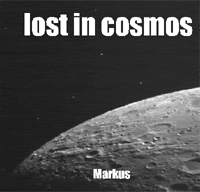Lost in the Cosmos

Copernicus used a statistical formula to place objects in the sky on a scale of 1 to forty based on their uniqueness. Aas long as one of these heavenly bodies persisted by retaining its uniqueness relative to the others then it had a chance of survival if there was nothing unique about it then for Copernicus it ceased to exist as a unique entity. This apparently had somthing to do with how he was able to say what was a planet, what was an asteroid, a moon and so on.
The Princeton scientist believes that what makes people unique is their ability to extend themselves into outerspace by space colonization. The scientist also believes that we have a small window of possibility in time to get the critical mass politically and economically to start space colonization. If we don't colonize outerspace we will loose our uniqueness as a species and cease to exist in some Copernican like scenario. He goes on to say there are only about two or three sub sequences that lead to a total crash of the human population.Its funny though how these doom and gloom scenarios never seem to emerge and outerspace looks like such a cold cold place."-Terry

Lost in the Cosmos, a novel by the late Walker Percy, is a mock self-help book and social satire on the American value of autonomy published in 1983. Organized into roughly four sections that explore ideas of the self, Percy's thesis is that the social ills which plague society are a result of humanity's epic identity crisis. Percy uses semiotic theories (the theories of signs) to argue that human consciousness of the self is unique from all other 'interactions' in the universe in that it is triadic.
It requires two sets of diadic interactions between that of the sign user, the sign, and the what the sign stands for in order to be complete. As a result, persons are thrust into the predicament of finding a sign that 'places' themselves. The book contains numerous essays, quizzes, and "thought experiments" designed to satirize conventional self-help texts while provoking readers to undertake a thoughtful contemplation of their existential situations and the search for meaning and purpose that could derive from such reflections.

